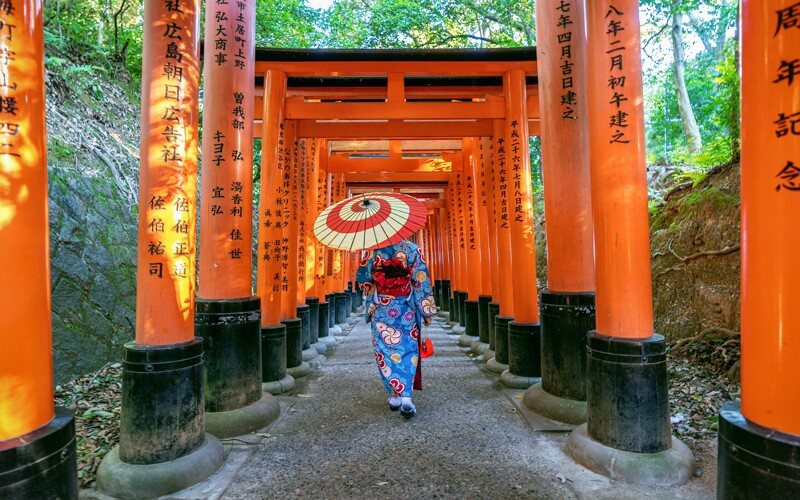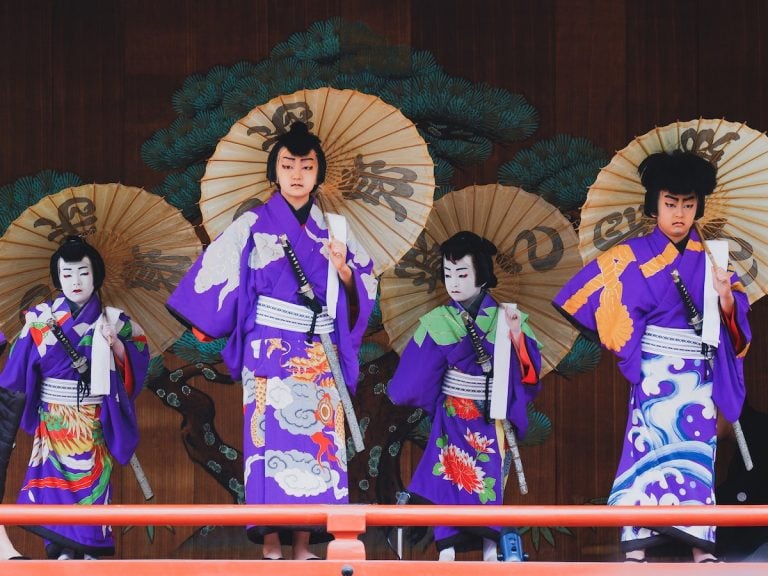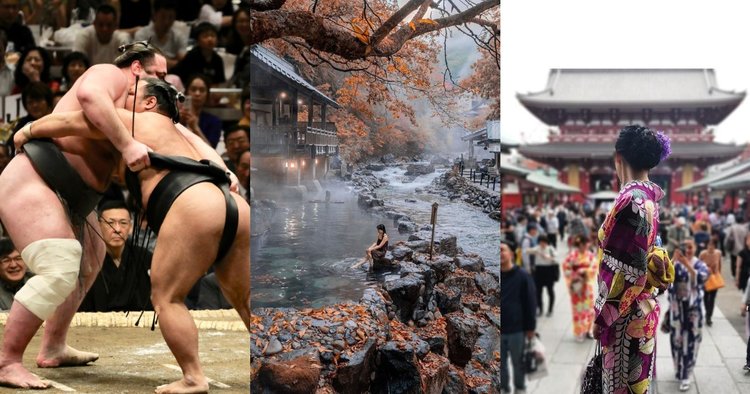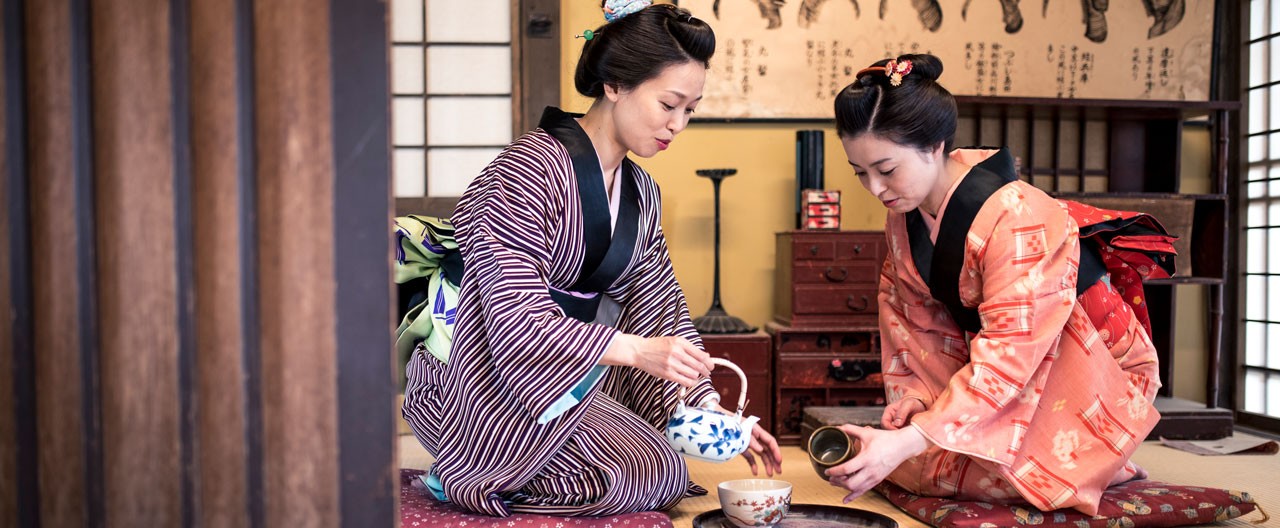Win a Free Trip to Japan!
Experience cherry blossoms and ancient temples
Japan offers a fascinating tapestry of history and tradition, making it an exceptional destination for travelers interested in Japan culture. Journeying through its ancient temples, grand castles, and vibrant festivals unveils the rich narratives that have shaped the nation. Moreover, exploring these historical sites provides deeper insights into the unique customs and lifestyles that persist today. By connecting with local communities and savoring authentic culinary traditions, visitors fully immerse themselves in the timeless essence of Japan, ensuring a transformative experience that transcends mere sightseeing.
Understanding the Historic Significance of Japan’s Cultural Sites
Japan’s cultural sites serve as vital windows into the country’s rich history and traditions. Exploring these sites allows travelers to grasp the essence of Japan culture while appreciating the stories behind them. Here are key points that highlight their historic significance:
- Time Capsules: Many cultural sites retain ancient structures, artworks, and practices that date back centuries. These sites reveal architectural styles and rituals that have shaped present-day Japan.
- Religious Heritage: Temples and shrines offer insights into the spiritual beliefs and practices integral to Japan culture. For example, Shinto shrines emphasize harmony with nature, while Buddhist temples reflect tranquility and compassion.
- Cultural Lessons: Visiting historic sites fosters a deeper understanding of Japan’s societal values, such as respect, community, and the beauty of simplicity. Sites like Himeji Castle epitomize these ideals.
- Educational Value: Educational tours and programs at these sites provide information on historical events that helped shape Japan’s national identity, allowing travelers to connect with the past meaningfully.
Comparison of Japan’s Cultural Sites
| Cultural Site | Type | Significance |
|---|---|---|
| Himeji Castle | Castle | Symbol of feudal power and architecture |
| Fushimi Inari Shrine | Shrine | Representation of Shinto beliefs |
| Kinkaku-ji | Temple | Showcase of Zen architecture |
| Historic Kyoto | City | Preserved ancient culture and traditions |
By engaging with these historic sites, visitors immerse themselves in Japan culture, discovering the deep connections between past and present. This knowledge enriches their travel experience, creating lasting memories that go beyond mere sightseeing.

Exploring Ancient Temples and Shrines
Diving into the heart of Japan culture, one cannot overlook the breathtaking ancient temples and shrines dotted across the landscape. These structures not only showcase architectural beauty but also serve as reflections of the country’s spiritual heritage. Here’s a closer look at why these sites are essential for understanding Japan’s rich history and culture.
Key Features of Temples and Shrines:
-
Architectural Styles:
- Shinto Shrines: Characterized by simplicity and natural materials, often adorned with torii gates.
- Buddhist Temples: Typically more elaborate, featuring intricate carvings and sculptures.
- Cultural Practices: Visitors experience rituals such as purification ceremonies and seasonal festivals that connect them with long-standing traditions.
Notable Ancient Sites:
| Site | Type | Location | Significance |
|---|---|---|---|
| Fushimi Inari-taisha | Shinto Shrine | Kyoto | Famous for thousands of vermillion torii gates |
| Todai-ji Temple | Buddhist Temple | Nara | Houses a giant Buddha statue and reflects political power of the era |
| Kinkaku-ji | Buddhist Temple | Kyoto | Also known as the Golden Pavilion, a Zen temple that symbolizes peace |
Exploring these sacred sites allows travelers to connect with Japan culture on a deeper level, as each temple and shrine offers a glimpse into the philosophy and values of Japanese society. The harmony between nature and architecture in these spaces speaks to the Japanese reverence for the environment, making visits to these ancient sites a profound journey through time.
The Influence of Samurai History in Japan
Samurai history plays a pivotal role in shaping Japan culture, embodying the values of honor, loyalty, and martial prowess. The samurai class, emerging in the 12th century, profoundly influenced Japan’s social structure, governance, and arts. Understanding this legacy enriches any traveler’s experience while exploring historical sites.
Key aspects of Samurai History:
- Bushido Code: The ethical framework that guided samurai behavior emphasized virtues such as courage, integrity, and compassion. This code still resonates in contemporary Japanese life.
- Military Strategies and Battles: The samurai’s military tactics shaped Japan’s feudal era, particularly during prominent conflicts like the Genpei War and the Sengoku period, leading to the unification of Japan under Tokugawa Ieyasu.
- Cultural Contributions: Samurai not only engaged in warfare but also served as patrons of the arts. They significantly advanced literature, tea ceremonies, and poetry, hence enriching Japan culture.
Comparison of Samurai Influence vs. Modern Japanese Culture:
| Samurai Influence | Modern Japanese Culture |
|---|---|
| Emphasis on discipline | Focus on education |
| Traditional arts | Contemporary arts |
| Honor-based communities | Diverse global interactions |
Through their extraordinary legacy, samurai history shaped not just Japan’s past, but also its present cultural identity, making it essential for travelers seeking to understand Japan culture more deeply.
Experiencing Traditional Japanese Festivals
Experiencing traditional Japanese festivals offers a vibrant glimpse into Japan culture, showcasing its rich heritage and strong community bonds. These celebrations reflect historical events, seasonal changes, and deep-rooted traditions. Here are a few key features that encapsulate the essence of these festivals:
- Seasonality: Festivals often align with specific seasons, such as the cherry blossoms in spring (Hanami) or the harvest in autumn (Matsuri).
- Cultural Significance: Each festival has a unique story, commemorating legends, deities, or significant historical events.
- Community Involvement: Locals actively participate, fostering a sense of unity. Visitors often join in, enhancing their connection to Japan culture.
Noteworthy Festivals
| Festival Name | Month | Key Features |
|---|---|---|
| Gion Matsuri | July | Parades, traditional clothing, floats |
| Tanabata | August | Star-themed decorations, wishes written on strips |
| Jidai Matsuri | October | Historical procession of costumes |
Essential Experiences
- Food Stalls: Enjoy local delicacies, such as Takoyaki and Yakitori, available during festivals.
- Performances: Witness traditional music and dance, bringing history to life and highlighting Japan’s artistic heritage.
- Mikoshi Processions: Experience the energy of carrying shrines through the streets, symbolizing community spirit.
By participating in these events, travelers immerse themselves in authentic Japan culture, gaining insights into the customs and traditions that have shaped the nation for centuries.

The Role of Castles in Japan’s Historical Narrative
Japan’s castles serve as iconic symbols of the nation’s history, representing both the military prowess and cultural identity of its eras. Understanding their significance allows travelers to appreciate how they crafted the Japan Culture we know today. Here are some key aspects to consider:
- Strategic Importance: Castles were built as fortifications to defend territories during times of conflict. The feudal system shaped the landscape of power, with castles often serving as the seat of local lords.
-
Architectural Masterpieces: Japanese castles display unique architectural styles characterized by:
- Elevated foundations
- Complex layouts
- Aesthetic elements like intricate wooden carvings and tiled roofs
-
Symbol of Authority: Beyond military functions, these castles exhibited the wealth and influence of the ruling samurai. Notable examples include:
Castle Name Location Significance Himeji Castle Hyogo Prefecture UNESCO World Heritage Site Matsumoto Castle Nagano Prefecture Known for its stunning black exterior Nagoya Castle Aichi Prefecture Famous for its ornate decorations - Cultural Heritage: Today, these castles provide insight into the Japan Culture, showcasing the evolution of society, art, and architecture through the centuries.
In conclusion, Japan’s castles are not just historical monuments; they narrate the rich tapestry of the nation’s past, drawing visitors to explore their majestic grounds and learn about the stories they tell.
Admiring Traditional Architecture and Design
Admiring traditional architecture in Japan offers a captivating glimpse into the country’s rich Japan culture. Each structure tells a story, showcasing unique aesthetics and historical significance. Notably, Japanese architecture blends harmony with nature, underscoring the importance of the environment in the cultural narrative.
Key Features of Traditional Japanese Architecture
- Materials: Predominantly wood, thatch, and bamboo.
- Design Principles: Asymmetry and simplicity, emphasizing natural beauty.
- Tatami Mats: Natural woven straw mats that define interior spaces.
- Engawa: A wooden veranda connecting rooms to gardens, allowing for seamless indoor-outdoor transitions.
Typical Structures to Explore
| Type of Structure | Features | Cultural Significance |
|---|---|---|
| Temples | Intricate wooden carvings, pagodas | Spiritual sanctuaries |
| Shrines | Torii gates, serene gardens | Sites of Shinto worship |
| Castles | Moats, stone walls, panoramic views | Symbols of power and feudal history |
| Tea Houses | Simplicity, tatami-lined rooms | Cultural hubs for tea ceremonies |
Traditionally, homes showcase Japan’s culture through sliding doors (fusuma) and traditional roof styles, creating minimalist yet functional spaces. Simply walking through historic districts, such as Gion in Kyoto or Takayama’s old town, immerses travelers in the seamless integration of Japan culture and architectural elegance.
This admiration not only enhances one’s travel experience but also fosters a deeper understanding of Japan’s historical narrative and cultural identity.
Discovering World Heritage Sites in Japan
Japan boasts a rich tapestry of history and culture, beautifully encapsulated within its numerous World Heritage Sites. These sites not only highlight the country’s architectural prowess but also offer insights into the deep-rooted traditions of Japan Culture. Here’s a closer look at some prominent sites:
Notable World Heritage Sites:
-
Hiroshima Peace Memorial:
- Symbolizes resilience and peace following the atomic bombing in 1945.
- Recognized for its powerful message of hope and remembrance.
-
Historic Monuments of Ancient Kyoto:
- Encompasses 17 sites, including temples, gardens, and palaces.
- Offers an exquisite glimpse into Japan’s imperial past and artistry.
-
Nikko National Park:
- Known for its stunning natural beauty interspersed with spiritual sites.
- Home to the ornate Toshogu Shrine, dedicated to Tokugawa Ieyasu.
-
Gassho-Zukuri Villages of Shirakawa-go and Gokayama:
- Features unique farmhouses with steep thatched roofs.
- Represents traditional rural life, harmonizing with natural surroundings.
Comparison of World Heritage Sites
| Site | Year Inscribed | Cultural Significance |
|---|---|---|
| Hiroshima Peace Memorial | 1996 | Reminder of peace and the power of resilience. |
| Historic Monuments of Ancient Kyoto | 1994 | A treasure trove of imperial elegance and architectural beauty. |
| Gassho-Zukuri Villages | 1995 | Insight into historical rural living and architectural uniqueness. |
Visiting these World Heritage Sites will enrich your understanding of Japan Culture, serving as a deep dive into the country’s past while reflecting on its journey through time. Each site tells a unique story, inviting travelers to connect profoundly with Japan’s historical narrative.

Interacting with Local Communities
Engaging with local communities profoundly enriches your understanding of Japan culture. Immersing yourself in the lives of residents not only offers unique insights but also fosters meaningful connections. Here are several ways to interact with local Japanese communities:
- Participate in Workshops: Join hands-on experiences such as calligraphy, tea ceremonies, or pottery classes. These activities allow you to learn traditional crafts and appreciate their cultural significance.
- Stay with Locals: Consider booking a stay at a ryokan (traditional inn) or a minpaku (private home). This experience provides a deeper sense of local life, hospitality, and culinary traditions.
- Attend Community Festivals: Immerse yourself in local festivals, where you can witness Japan culture in action. Engage in activities, taste regional foods, and enjoy performances that highlight local heritage.
- Volunteering Opportunities: Look for volunteer programs that support community-driven projects. These opportunities enable you to contribute positively while building relationships with locals.
| Interaction Method | Key Benefits |
|---|---|
| Workshops | Skill development and cultural appreciation |
| Ryokan/Minpaku stays | Authentic hospitality and culinary experiences |
| Festivals | Participation in traditions and local customs |
| Volunteering | Meaningful contribution and community insight |
By actively participating in these experiences, you gain a richer understanding of Japan culture, ultimately deepening your travel experience. This connection not only enhances your appreciation of the country’s heritage but also leaves lasting memories of your journey through Japan.
Culinary Traditions Linked to Japan’s History
Japan’s culinary traditions are deeply intertwined with its rich history, reflecting regional ingredients, seasonal changes, and cultural influences. The fascinating world of Japan Culture presents an opportunity for travelers to explore the historical significance of Japanese cuisine. Here are a few key elements that highlight this connection:
-
Seasonal Foods: Traditional Japanese meals emphasize the seasonality of ingredients. For instance:
- Spring: Sakura (cherry blossoms) are often used in sweets and beverages.
- Summer: Cold soba noodles provide refreshment and balance.
- Autumn: Dishes featuring mushrooms and chestnuts celebrate the harvest.
- Winter: Hot pot meals, like nabe, embody warmth and community.
-
Historical Dishes: Certain dishes trace their roots back to significant periods:
- Sushi: Originating during the Edo period, sushi underscores Japan’s connection to the sea.
- Tempura: Introduced by Portuguese missionaries, tempura has evolved and become a staple of Japanese dining.
- Cultural Practices: Eating rituals offer insights into Japan Culture. For example, the tea ceremony, or "chanoyu," reflects Zen Buddhist practices and emphasizes mindfulness through the preparation and appreciation of matcha.
-
Regional Variations: Each region boasts unique culinary practices, such as:
- Kyoto-style kaiseki (multi-course dining) showcases seasonal ingredients.
- Osaka’s street foods, like takoyaki, highlight urban culinary creativity.
Understanding these elements not only enriches your travel experience but also deepens your appreciation for Japan Culture as a whole.
Reflections on the Traveler’s Experience in Japan
Traveling through Japan reveals a vibrant tapestry of experiences woven into its rich Japan culture. Each moment spent among historic sites, local communities, and culinary delights offers profound insights into the nation’s identity. After immersing yourself in its history, you may find several key reflections:
- Profound Appreciation: Visiting ancient temples and shrines, such as Fushimi Inari Taisha, cultivates a deep respect for Japan’s spiritual heritage. Not only do these sites embody centuries of tradition, but they also foster a connection to nature that resonates with visitors.
- Awe of Architectural Mastery: The subtle beauty of traditional Japanese architecture, from serene tea houses to majestic castles, leaves a lasting impression. Take the time to admire how design harmonizes with nature, reflecting the principles of Japan culture.
- Cultural Nuance: Engaging with local festivals enables travelers to witness firsthand the vibrancy of community life and the continuation of age-old traditions. Experiencing a matsuri provides an emotional connection that transcends the ordinary tourist experience.
- Culinary Discovery: Sampling regional dishes reveals how food intertwines with history, offering insights into local customs and societal values. Whether savoring sushi in Tokyo or ramen in Fukuoka, each meal becomes a reflection of Japan’s diverse culinary heritage.
Ultimately, a journey through Japan instills a profound understanding and appreciation of its compelling Japan culture—one that travelers can carry with them long after their visit concludes.
Frequently Asked Questions
What are some must-visit historical sites in Japan for travelers?
Travelers seeking to explore Japan’s rich history should not miss iconic sites such as Kyoto’s Kinkaku-ji (Golden Pavilion), an exquisite Zen temple surrounded by beautiful gardens. Another highlight is Hiroshima’s Peace Memorial Park, a poignant tribute to the victims of the atomic bomb, offering insight into the country’s resilience. The ancient city of Nara, home to Todai-ji Temple and friendly free-roaming deer, is also a must-visit, with its remarkable historical significance.
How can I immerse myself in Japanese culture while visiting historical sites?
To fully immerse yourself in Japanese culture during your visits to historical sites, consider participating in guided tours that offer perspective and storytelling about each location. Engaging in traditional practices like tea ceremonies, calligraphy workshops, or wearing a kimono can also enhance your cultural experience. Additionally, setting aside time to interact with locals, trying regional cuisine, and attending local festivals will deepen your understanding and appreciation of Japanese heritage.
What is the best time of year to visit historical sites in Japan?
The best time to visit Japan for historical site exploration is during the spring (March to May) and fall (September to November) seasons. Spring offers the breathtaking sight of cherry blossoms in full bloom, attracting both locals and tourists to historical locations. Conversely, the fall showcases vibrant autumn leaves, making temples and shrines particularly picturesque. Weather during these seasons is generally mild, providing comfortable conditions for sightseeing.
Are historical sites in Japan accessible for travelers with disabilities?
Many historical sites in Japan are making continual improvements to enhance accessibility for travelers with disabilities. While some ancient structures may present challenges due to their age and design, popular sites often have ramps, elevators, and accessible restrooms. It is advisable to check specific sites in advance regarding their facilities and arrangements to ensure a comfortable visit. Organizations and local tourist information centers can provide additional resources and support.
What cultural etiquette should I be aware of when visiting historical sites in Japan?
When visiting historical sites in Japan, it is essential to adhere to local customs and etiquette to show respect for the culture. Always remove your shoes when entering temples or homes, and be mindful of maintaining a quiet demeanor while exploring sacred sites. Photography may be restricted in certain areas, so look for signage indicating where it is or isn’t allowed. Additionally, speaking softly and respecting personal space will enhance your interactions with both locals and fellow visitors.
